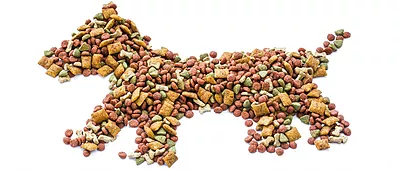Many of my clients worry about the quantity of treats they are expected to give their dog when carrying out behaviour modification or manners training.
It is true that positive, reward-based training relies on food as the main motivator particularly in the early stages of training – and in most dogs’ world – the smellier the treat the more tasty and alluring it is.
At this stage of their dog’s training I always advise that the owner measures out their dog’s daily allowance and then decide how much training they are going to do that day and therefore how many treats their dog will get and then reduce the daily allowance by the volume of the treats. In this way the dog receives the same amount of food – it is just distributed throughout the day rather than in two main meals.
These owners’ can be reassured to learn that once their dog has learnt the behaviour we want them to perform and are doing it every time we ask them to – the number of treats the dog needs to maintain this learning can be reduced. In fact it is best to get a dog onto a variable schedule of reward as soon as possible.
I use the Jackpot analogy to explain this. For example, if you play at a slot machine you may win nothing for a few goes, then you might win a little amount; then you win the Jackpot! When that happens it has been scientifically proven that most people will play again in the hopes that they will get the Jackpot again. This is how it works with your dog – he may get a little piece of kibble one time, nothing the next and then a handful of sausage the next. The anticipation of the reward is the motivator. A few clients however, say that their dogs are not food-motivated and are therefore difficult to train. Some say that their dogs work for food in the house or garden, but once they are out and about they are not bothered.
It is also true that some dogs are much fussier than others and may turn their nose up at a piece of hot dog or sausage. However, it is rare to find a dog that cannot be motivated by food. We just need to find out what that dog really loves by doing a treat taster for your dog! This involves offering him a selection of delectable treats to find out which gets him really excited. It may be a surprise to find out what it is – I had one client whose dog worked best for pieces of carrot!
We also need to make sure that the value of the reward we are offering the dog is big enough to counter all the other distractions in the environment. A dog may work for some of his usual kibble in the house or garden, but in the wider world it may not be enough and you will need to increase the value of the treat to something like chicken or cheese.
Sometimes a dog is really stressed and can’t eat. In these instances, using a clicker can help as the ‘click’ still helps to reinforce that dog for the behaviour he offered.
Make sure your dog is not too full when you decide to do some training, as a dog that is not hungry will be difficult to motivate with food. But also make sure he is not really hungry as he will be too interested in the food to concentrate on what you are trying to teach him.
If you really do have a dog that won’t work for food, all is not lost. They may work for play, toys, squeaky balls or praise. You just need to find that magic ingredient that makes your dog’s life light up.

